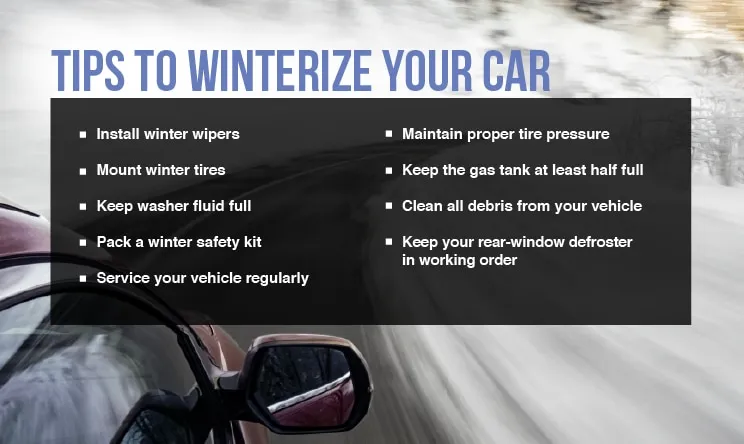Winter’s harsh conditions can make driving treacherous. Snow, ice, and freezing temperatures demand extra preparation, not just for drivers, but for their vehicles too. Proper winter car maintenance is crucial for safe and reliable performance. This guide provides essential Winter Car Maintenance Tips to help you prepare your vehicle for the challenges of winter driving.
Essential Winter Car Maintenance Checklist
Before winter’s chill sets in, a thorough vehicle inspection and service are crucial. Here’s a checklist of key areas to address:
Battery Check and Replacement
Cold temperatures significantly reduce battery power. A weak battery struggles to start your engine in freezing weather. Have your battery tested and replaced if necessary. Consider a battery with a Cold Cranking Amps (CCA) rating of 600 or higher for optimal winter performance.
Cooling System Inspection and Antifreeze
Maintain the correct antifreeze-to-water ratio in your cooling system to prevent freezing and corrosion. A 50/50 or 70/30 mix is generally recommended, but consult your owner’s manual or a qualified technician for the specific requirements of your vehicle.
Brake System Check
While cold weather doesn’t directly damage brakes, a thorough inspection ensures optimal performance in winter conditions. Have your brakes checked for wear and tear, and address any issues promptly.
Belts, Hoses, and Ignition System
Inspect belts, hoses, spark plugs, wires, and cables for signs of wear or damage. These components are vital for engine operation, and failure in freezing temperatures can leave you stranded.
Winter Tires for Enhanced Traction
While all-season tires might suffice in mild winter conditions, dedicated winter tires provide superior traction on snow and ice. Winter tires feature unique rubber compounds that remain flexible in cold temperatures, ensuring optimal grip and handling. Consider installing winter tires if you live in an area with frequent snow or ice.
Maintain Proper Tire Pressure
Tire pressure fluctuates with temperature changes. For every 10°F drop in temperature, tire pressure can decrease by 1 PSI. Check and adjust your tire pressure regularly throughout winter, referring to the recommended pressure listed in your owner’s manual or on the tire placard.
Monitor Changing Temperatures and Traction
Be aware of fluctuating temperatures, as they significantly impact road conditions and traction. Driving on slush or ice near freezing temperatures can be more dangerous than driving on packed snow at lower temperatures. Adjust your driving accordingly to maintain control.
Winter Wipers and Washer Fluid
Install winter wiper blades designed to prevent ice buildup. Ensure your washer fluid reservoir is filled with a winter formula that won’t freeze in sub-zero temperatures. Carry extra washer fluid in your vehicle for refills.
Fuel Tank Maintenance and Emergency Kit
Keep your gas tank at least half full during winter. A full tank minimizes condensation, preventing fuel line freeze-up. Also, pack a winter emergency kit with essentials like blankets, a flashlight, jumper cables, a first-aid kit, and non-perishable food.
Rear-Window Defroster and Emergency Preparedness
Ensure your rear-window defroster is functioning correctly for clear visibility. Familiarize yourself with winter emergency procedures, such as staying in your vehicle if stranded, running the engine intermittently for warmth, and using dome lights to attract attention.
Winter Driving Techniques
Practice safe winter driving techniques. Reduce speed, increase following distance, and avoid sudden braking or acceleration. Learn how to handle skids and navigate icy or snowy roads safely.
Conclusion: Stay Safe on Winter Roads
Winter driving presents unique challenges, but with proper preparation and maintenance, you can ensure a safer and more reliable journey. Following these winter car maintenance tips will help you stay safe and confident on the road throughout the winter season.
